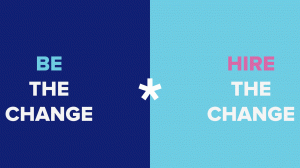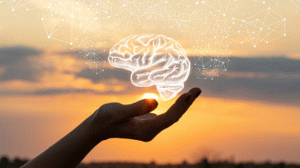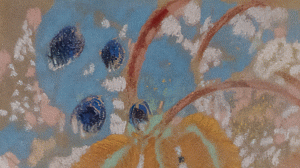Header: Analise Benevides via Unsplash.
Five years ago I started writing a book with the intention of opening an invitation for CEOs to become Chief Empathy Officers. For various reasons, I decided not to continue with the endeavour but I recently found my notes around empathy and thought of sharing some of my research in this blog post given that the focus is on team wellbeing practices for self-care September (cf. Action for Happiness Calendar). By the way, if you are interested in the idea of CEOs as Chief Empathy Officers, I invite you to watch my talk at TEDxBologna2016.
I already touched briefly on the concept of empathy in the March blog post “From self-concern to other-concern” and of compassion in the August blog post “Transforming pain into compassion” but this time, I would like to take you on an empathy deep dive to that realise that embracing otherness is embracing yourself (Thandie Newton, TED talk, 2011). Your essence is one of oneness with the other.
“Empathy is about finding echoes of another person in yourself.” (Mohsin Hamid)
The dominant paradigm still pushes the idea that the human species is selfish and that it is this ‘survival of the fittest’ that has allegedly been a key driver for human evolution and progress. However, recent breakthroughs in biology and neuroscience paint a different picture of human evolution. We are not wired to be selfish and isolated. Author Matthew D. Lieberman claims that “we are wired to be social”. We are ‘homo empathicus’ (Lieberman, 2013).
Empathy lies at the core of the human ability to connect to others. The word empathy comes from the 1800 German word Einfühlung which means ‘feeling into’ (Szalavitz & Perry, 2011). So empathy is feeling and understanding how it is for another person and using that understanding to guide our actions. It is the ability to empathise that allowed our ancestors to bond and collaborate to survive.
Leading changemaker organisation Ashoka includes empathy amongst its key leadership skills as it “plays a crucial role in innovation, changemaking, and solving entrenched systemic problems” (Ashoka UK, 2015). Empathy also requires a number of different skills, such as emotional intelligence, perspective taking, problem solving, and many more.
More than sympathy and compassion
Importantly, empathy is not the same as sympathy or compassion. You experience sympathy when you feel bad for someone’s pain. Compassion adds a concern for another that makes you want to alleviate their suffering. But empathy is something more, it makes compassion and kindness personal. It means you experience the world from another person’s perspective. For instance, you might feel bad for an illegal immigrant who is suffering – or you may sympathise with them; you may be concerned about their pain and want to support them – or show them compassion; but you might not necessarily understand what it feels like to be them – or feel empathy for them. Empathy is about walking in their shoes and crossing the bridge that separates you from them. According to cultural thinking and writer Roman Krznaric, “[e]mpathy can create a revolution. (...) [A] revolution of human relationships” (Krznaric, 2014).
Two types of empathy
Researchers have identified two important aspects of empathy: affective empathy and cognitive empathy. Affective empathy is when you feel a bodily resonance with the state of the other person – you feel like you are in harmony with each other. Cognitive empathy is when there is a more conceptual understanding of what the other person is experiencing, and why (Krznaric, 2013). During his talk at James Baraz’s Awakening Joy class, Dr Rick Hanson highlighted that these two aspects work together: “the sense in your gut gives you clues about the state of the other person, and your thoughts about that person tell you where to look in your gut” (Hanson, 2007).
Over-empathy
However, because empathy is personal, you might feel overwhelmed by other people’s suffering and pain. As you feel the pain of others, you suffer ourselves. Researcher Tania Singer warns that “[t]his can become so intense that it produces empathic distress in [you] and in the long run could lead to burnout and withdrawal” (Singer, 2013). This can have negative consequences on your own wellbeing.
One might question whether empathy is a positive trait if it can cause such emotional distress, but perhaps it is not empathy that brings you down. What if you have not developed yet the coping mechanisms necessary to deal with the effects of over-empathy? This is where compassion and kindness, starting with yourself, are essential tools. Singer points out how feeling compassion for someone else’s suffering does not mean you “feel with their pain but [you] feel a concern – a feeling of love and warmth – and [you] can help develop a strong motivation to help the other” (Singer, 2013). Hence, compassion feeds into empathy, which in turns feeds into the way you engage with the world. Practices of self-compassion and self-kindness also help you ensure you stay open to others without being negatively affected ourselves.
Avoiding empathy burnout
Frank Gabrin (2013) proposes a process to avoid empathy overload and consequently empathy burnout. He uses the acronym “REFLECT”:
- R = remember why you want to care;
- E = earn your satisfaction – you are the only one responsible for fulfilling that initial desire to care; don’t blame others;
- F = formulate a plan – you need to show up and be present; you need to connect with the other person and focus on the news of the other person; you need to be empathetic and feel their pain; at that point, when you feel their pain, you can shift towards compassion to leave the pain and feel the care for the other person; finally you can take action to make things better;
- L = look to see if you are the cause or the effect of the problem;
- E = evaluate to see if your care is making a difference;
- C = circle back to the beginning of the process;
- T = take care of yourself in all of this.
The key element in this process is to remove yourself from the pain of the other once embraced to move towards a compassionate attitude that will drive your actions without leading you to an empathy overload.
Vulnerability
Nonetheless, empathy takes great courage as you have to step outside of your comfort zone and become vulnerable to connect with the other. Making someone’s pain or suffering your own removes the protective shield that separates you from them. Shame researcher Dr Brené Brown encourages you to “show up and let [yourself] be seen. This is vulnerability. This is daring greatly” (Brown, 2012). This is the core of all meaningful human experiences. Vulnerability enables you to reconnect to others and build shame resilience to fight the culture of scarcity and fear induced by the dominant paradigm.
Unlimited empathy
There is of course a lot more I could write about empathy but hopefully I have painted a clear enough picture of what it is, how it works, what the benefits are, and how to cope with its potential drawbacks. Now it is time for you to put empathy in action! The following recipe “Unlimited empathy” is a powerful group or team activity to deepen the bonds and foster empathy and compassion among the people through questioning and listening.
You can access the full guidelines here. The theme for the next month is Optimistic October so the next article will discuss the importance of rewiring your brain to take in the good.
About Greta and Recipes for Wellbeing
 Greta Rossi is a changemaker involved in multiple not-for-profit initiatives, including Recipes for Wellbeing, Akasha Innovation, Pitch Your Failure, and ChangemakerXchange. Recipes for Wellbeing works towards shifting the culture of changemaking to include a focus on holistic wellbeing to enable anyone to contribute more effectively to creating positive change in the world. From freely accessible wellbeing recipes, through wellbeing talks and workshops, to immersive wellbeing labs, we make wellbeing accessible to changemakers and their teams. If you’d like to host a talk, workshop, or retreat for your team or organisation, reach out to us at info@recipesforwellbeing.org.
Greta Rossi is a changemaker involved in multiple not-for-profit initiatives, including Recipes for Wellbeing, Akasha Innovation, Pitch Your Failure, and ChangemakerXchange. Recipes for Wellbeing works towards shifting the culture of changemaking to include a focus on holistic wellbeing to enable anyone to contribute more effectively to creating positive change in the world. From freely accessible wellbeing recipes, through wellbeing talks and workshops, to immersive wellbeing labs, we make wellbeing accessible to changemakers and their teams. If you’d like to host a talk, workshop, or retreat for your team or organisation, reach out to us at info@recipesforwellbeing.org.










